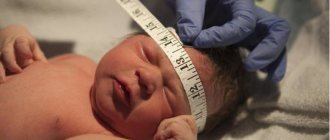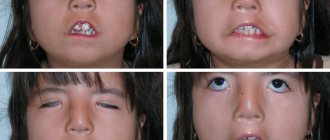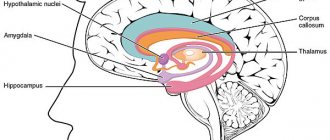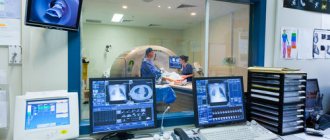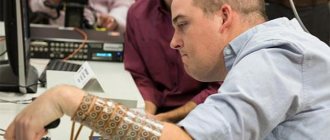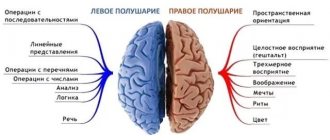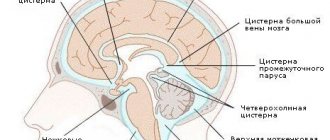Interhemispheric brain asymmetry and language learning success
The article is devoted to the study of the relationship between interhemispheric asymmetry of the brain of high school students and the success of learning disciplines of the linguistic cycle.
Key words: functional interhemispheric asymmetry, individual profile of lateral organization, learning success
Psychological and psychophysiological characteristics of the individual are the main prerequisites for success in one or another type of professional activity. We consider adolescence to be especially important, since it is during this period that self-awareness develops and educational and professional activities are finally formed. One of the constant psychophysiological characteristics of a person is the individual profile of lateral organization (IPLO) or lateral phenotype. Numerous studies show that IPLO must be taken into account when solving a wide range of problems [3, 6].
Recently, there has been an increase in the number of studies devoted to the influence of interhemispheric asymmetry on the success of educational activities of children and adolescents, and to the issues of the dependence of learning success on the individual lateral profile of the organization. The influence of IPLO on the organization of the educational process and the success of educational activities is of interest to a fairly large number of psychologists, physiologists, teachers and methodologists [1, 2].
This article is devoted to the study of the relationship between the profiles of the lateral organization of the brain and the success of teaching the disciplines of the linguistic cycle to high school students in a specialized linguistic school.
The study was conducted in four senior classes of MBOU Secondary School No. 53 with in-depth study of the German language in Rostov-on-Don. 68 schoolchildren (23 boys and 45 girls) of grades 10 and 11 took part in the work.
To determine the lateral profile, subjects were asked to answer questions determining the leading hand, eye, ear and foot. To determine the dominant hand, the Annette questionnaire was used, the dominant eye was determined using the Rosenbach test, and to determine the dominant ear, it was necessary to answer the question: “Which ear do you most often put your phone on?” and to determine the leading foot it was necessary to answer the question: “Which foot do you hit the ball most often when playing football?” The leading hand in the “hand-eye-ear-foot” system is given to the leading hand [7].
During the experiment, four groups were identified according to the type of functional interhemispheric asymmetry: right, right-sided, mixed and left. It turned out that the largest number of schoolchildren belong to the right-sided type, the smallest - to the left-sided type (Fig. 1).
Rice. 1. Distribution of individual lateral profiles (%)
The success of teaching linguistic disciplines was studied based on the average score in Russian, German and English. The average score was calculated based on all grades received by students in the relevant subjects during the 2015–2016 academic year. The highest average academic score in the Russian language was found among high school students with the right-sided type of PLO; the indicators for schoolchildren of the mixed type were slightly lower. The lowest average score is for high school students with the right type.
Academic achievement results in the German language are generally higher than in the Russian and English languages. This is apparently due to the specifics of the school. The distribution of grades is as follows: the highest scores are for students with right-sided and right-sided profiles, the performance of mixed-type students is slightly lower, and the lowest scores are for schoolchildren with left-sided profiles.
The distribution of grades in English is somewhat different. The best results are for high school students with the right type of PLO, the worst for those with the left side.
Thus, according to all the above criteria (with the exception of academic performance in the Russian language), the worst results were shown by high school students with the left-sided type of lateral profile. In the Russian language, the worst results were demonstrated by high school students with the right type of PLO,
The success of solving linguistic problems was studied using the Eysenck verbal test [5. P.376–482], which consisted of 20 tasks. Each test item was worth 0.25 points. Thus, the maximum score for the verbal test is 5, which allows you to compare its results with the average score in the disciplines of the linguistic cycle. When passing the verbal test, the highest results were shown by high school students with right-sided PLO. The results for students with a mixed profile are somewhat lower. The lowest is the result of students with left-sided PLO. “Left-sided” schoolchildren failed to cope with almost 90% of the tasks; their results were significantly lower than the results of schoolchildren with right-sided and mixed types of PLD.
A comparative diagram for assessing success in studying disciplines of the linguistic cycle is shown in Fig. 2
Rice. 2. Results of the verbal test and average scores in the disciplines of the linguistic cycle
To estimate the measure of scattering, the standard (mean square) deviation of the obtained values was found [4. pp. 28–31]. The largest standard deviation was obtained when processing the results of the verbal test. On average, it exceeds the standard deviation of other estimates by more than 2 times. This suggests that the verbal test score is more diffuse than the others and, therefore, less statistically reliable. In addition, a confidence interval (with a confidence level of 95%) was calculated for these estimates. The corresponding error bar is shown in the diagram.
Next, the correlation between average scores in the disciplines of the linguistic cycle and the verbal test was investigated [4. pp. 147–151]. It turned out that the assessment of the verbal test practically does not correlate with the assessments of the disciplines of the linguistic cycle.
In schoolchildren with right-sided IPLD, there is a correlation between all disciplines of the linguistic cycle: 74% between grades in Russian and German, the same coefficient between grades in Russian and English, 78% between grades in German and English.
In addition, among students with a mixed profile, there is a correlation between grades in German and English (72%). However, the correlation coefficients between scores in Russian and both foreign languages are significantly lower (49% for German and 46% for English).
Since the sample size is small, it seems that testing the hypothesis about the presence of a correlation between academic performance in all disciplines of the linguistic cycle requires additional research.
Thus, we can conclude that the success of learning disciplines of the linguistic cycle is associated with the lateral profile of the functional interhemispheric asymmetry of the brain and the corresponding function mainly depends on the activity of the left hemisphere. In addition, regardless of the profile, academic results in the German language are higher than in Russian and English, which is due to the specifics of the specialized school.
It should be noted that, regardless of the individual profile of lateral organization, high school students performed worst of all on the verbal test. Apparently, the skills for solving non-standard problems are not sufficiently developed.
Literature:
- Arshavsky I. A. Interhemispheric asymmetry of the human cerebrum and some problems of pedagogy. — M.: Knowledge, 2002
- Bezrukikh M. M. Left-handed child at school and at home. - Ekaterinburg, U-Factoria, 2004. - 300 p.
- Eremeeva V. D. Types of laterality in children and their connection with success and learning. // Questions of psychology. - 1989. - No. 6. - P. 128–135
- Fundamentals of mathematical statistics / ed. V. S. Ivanova. - M.: Physical culture and sport, 1990. - 176 p.
- Psychological tests / comp. S. Kasyanov. - M.: Eksmo, 2006. - 608 p.
- Sirotyuk A.L. Psychophysiological foundations of teaching schoolchildren: Textbook. — M.: Sphere shopping center, 2007
- Physiology of child development. Guide to Age Physiology / ed. M. M. Bezrukikh, D. A. Farber. — Voronezh: MODEK, 2010
Causes of ventricular asymmetry
Ventricular asymmetry should not be confused with ventricular dilatation. Asymmetry of the lateral ventricles of the brain (this is what is most common) differs from dilatation in that with asymmetry the mirror image of one of the ventricles relative to the sagittal plane does not coincide with the other, and with dilatation the ventricles are enlarged.
It must be remembered that asymmetry of the ventricles of the brain in adults and children is not an independent disease , but a sign of another process, just as a swollen finger is not a disease of the finger, but a symptom of its acute infection.
Most often, ventricular asymmetry occurs in the prenatal period, or is associated with perinatal or birth trauma. Brain asymmetry in newborns should be carefully observed, either with ultrasound of the brain through the fontanelles or with MRI.
But conducting an MRI of the brain in children is not easy, since you need to lie still for about 15-20 minutes, and anesthesia is used during this study.
If the production of cerebrospinal fluid is then balanced by its resorption, or reverse absorption, then such asymmetry can be eliminated, or may remain for life. At the same time, a person can live fully and die in old age “perfectly healthy,” no matter how strange it may sound.
If the balance in the cavities of the ventricle is shifted towards overproduction of cerebrospinal fluid, or towards a decrease in its absorption, then the syndrome of intracranial hypertension develops, the extreme expression of which is hydrocephalus.
Also, the reasons for the unevenness of the lateral, paired ventricles are :
- consequences of neuroinfections (meningitis, meningoencephalitis, especially purulent ones);
- adhesive process on the membranes;
- consequences of severe injuries (brain contusion);
- tumors and cysts, including parasitic ones, any volumetric process in the cranial cavity;
- intracranial hemorrhages, that is, hemorrhagic stroke.
Here you need to make the necessary correction. Since the entire volume occupied by the shed blood, be it intracerebral, subdural, or subarachnoid hemorrhage, displaces all brain structures, neurosurgeons most often operate on these patients for urgent reasons.
In this case, doctors do not talk about “asymmetry”. We are talking about dislocation of brain structures as a serious and life-threatening complication. Therefore, this point is rather conditional.
About the consequences
There is no direct connection between the visible difference and the functional asymmetry of the cerebral hemispheres. Sometimes the opposite pattern occurs: for example, with epilepsy, patients experience sensory seizures with loss of sensitivity in the right extremities, but in the place where the source should be - in the sensory zone of the posterior central gyrus of the cortex on the left - there are no disturbances.
The most significant disorder of asymmetry of brain structures is a violation of liquorodynamics. If hydrocephalus exists, it may again be asymptomatic. This applies to normal pressure hydrocephalus, when there is an excess of cerebrospinal fluid, but only quantitatively, its pressure is normal. But if the cerebrospinal fluid pressure increases, then a syndrome of increased intracranial hypertension occurs. It is manifested by the following disorders:
- persistent, diffuse headaches, especially in the morning;
- improvement in condition after lunch and in the evening;
- progressive decrease in vision;
- the occurrence in severe cases of vomiting, which may or may not be accompanied by nausea;
- the appearance of congestive optic discs in the fundus.
If such symptoms occur, you should urgently consult a neurologist. In mild cases, conservative treatment leads to recovery, but sometimes surgery is required. In this case, the interhemispheric asymmetry of the brain will remain, but nothing will bother the patient, since the cerebrospinal fluid will be drained into the abdominal cavity through the ventrpiculoperitoneal shunt.
In conclusion, it should be noted that early monitoring of increased intracranial pressure in childhood always bears fruit, since atrophy of the cerebral cortex can be avoided in a timely manner. If there are no symptoms, then it is enough to observe the children with a neurologist. Direct measurement of liquor pressure is only possible by drilling a hole in the head and installing a pressure gauge (literally), but indirect signs make it possible to fairly well assess the degree of violations and take the necessary measures.
